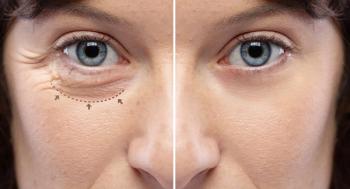
Early-onset sepsis may be a risk factor for ROP
A recent study reported that proven early-onset sepsis is an early risk factor for severe retinopathy of prematurity (ROP),1 according to first author Salma El Emrani, BSc, who is from the Department of Ophthalmology, Leiden University Medical Center, and Neonatology, Department of Pediatrics, Willem-Alexander Children’s Hospital, Leiden University Medical Center, both in Leiden, The Netherlands.
She and her co-authors explained that while neonatal sepsis has already been reported as an independent risk factor for ROP,2,3 early-onset sepsis has not been.
They explained that shedding light on the sepsis onset may aid in the understanding of the pathophysiology behind the first phase of ROP.
“Early-onset sepsis is acquired through vertical transmission in the first 72 hours of life, while late-onset sepsis is acquired through hospital and community environmental microorganisms beyond the first 72 hours of life and occurs more often.4,5 Since studies have shown that placental inflammation/infection through vertical transmission leads to an increased risk of ROP, it may be beneficial to investigate the independent effect of early-onset on ROP,6,7 ” they said.
They believe that extra awareness of ROP risk factors shortly after birth can provide clinicians with the opportunity to tailor neonatal treatment decisions in phase-I ROP well before the first ROP screening is performed, they said.
Systematic review and meta-analysis
The investigators undertook a systemic review and meta-analysis to identify the association between the early onset of sepsis and the risk of developing ROP. They searched PubMed, Embase, and Cochrane Library for observational studies that reported diagnosed early-onset sepsis.
The study’s primary outcomes were the findings of any stage of ROP and severe ROP (stage 3 or higher, type I, aggressive [posterior] ROP, plus disease or requiring treatment). The potential confounders investigated were gestational age at birth, birthweight, small for gestational age, maternal steroid use, necrotizing enterocolitis, late-stage sepsis, and the duration of mechanical ventilation, Ms. El Emrani and associates explained.
Results of identified studies
The researchers included 17 studies in their analysis that met the inclusion criteria. Despite significantly high heterogeneity among the studies, the primary finding was that “Neonates with proven early-stage sepsis had an increased risk for severe ROP (odds ratio 2.21; 95% confidence interval 1.68–2.90), and no significant confounders influencing this effect size were found in the meta-regression analysis,” they reported.
The study concluded, “This meta-analysis introduces proven early-onset sepsis as an early risk factor for severe ROP. Future studies should diagnose sepsis based on positive blood or cerebrospinal fluid cultures and distinguish between proven early- and late-onset sepsis to provide reliable and stronger evidence. Neonatologists need to be aware that early-onset sepsis is an early predictor of ROP that should be taken into account in neonatal policies and treatment decisions well before ROP screening begins.”
References
El Emrani S, van der Meeren LE, Jansen EJS, et al. Early-onset sepsis as an early predictor for retinopathy of prematurity: a meta-analysis. Am J Perinatol. 2024;published online July 24; DOI https://doi.org/ 10.1055/a-2369-6690. ISSN 0735-1631
Trzcionkowska K, Groenendaal F, Andriessen P, et al. Risk factors for retinopathy of prematurity in the Netherlands: a comparison of two cohorts. Neonatology. 2021;118:462–469.
van Sorge AJ, Schalij-Delfos NE, Kerkhoff FT, et al. Reduction in screening for retinopathy of prematurity through risk factor adjusted inclusion criteria. Br J Ophthalmol. 2013;97:1143–1147.
Bedford Russell AR, Kumar R. Early onset neonatal sepsis: diag- nostic dilemmas and practical management. Arch Dis Child Fetal Neonatal Ed. 2015;100:F350–F354.
Dong Y, Speer CP. Late-onset neonatal sepsis: recent developments. Arch Dis Child Fetal Neonatal Ed. 2015;100:F257–F263.
El Emrani S, Jansen EJS, Goeman JJ, et al. Histological chorioamnionitis and funisitis as new risk factors for retinopathy of prematurity: a meta-analysis. Am J Perinatol. 2024;41(suppl 1):e3264–e3273.
Villamor-Martinez E, Cavallaro G, Raffaeli G, et al. Chorioamnionitis as a risk factor for retinopathy of prematurity: an updated systematic review and meta-analysis. PLoS One. 2018;13:e0205838.
Newsletter
Don’t miss out—get Ophthalmology Times updates on the latest clinical advancements and expert interviews, straight to your inbox.









































